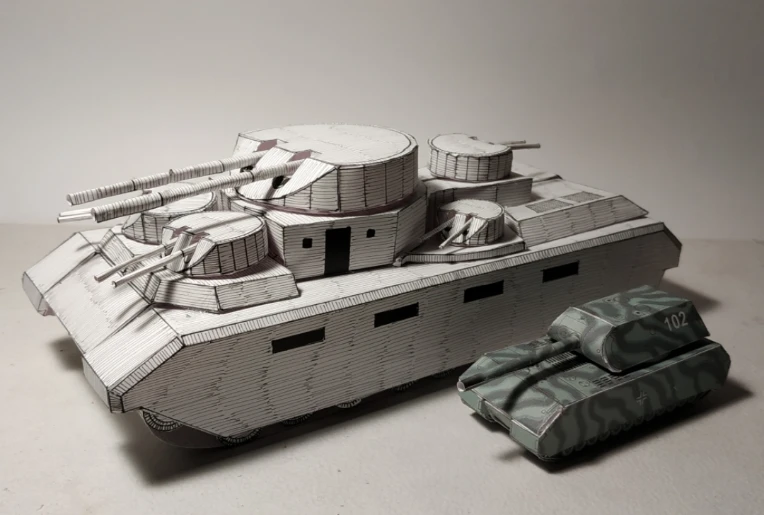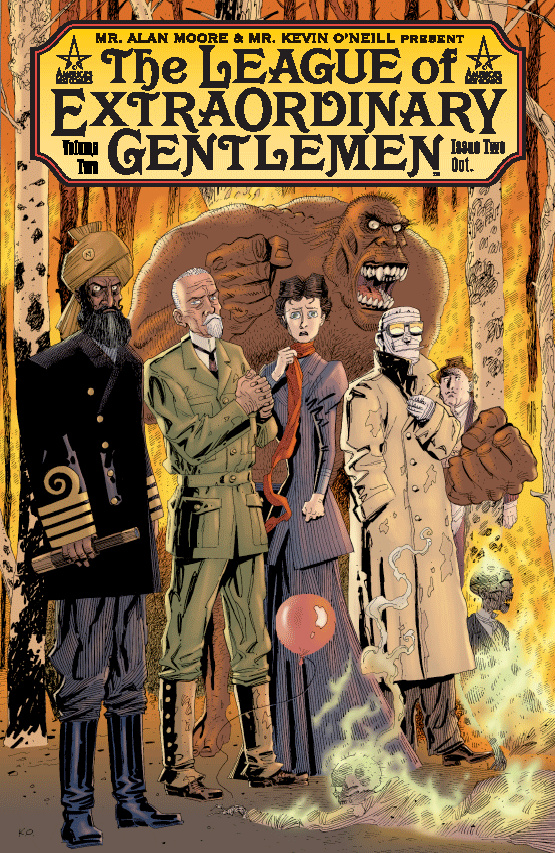
The concept of Super Heavy Tanks has been a wide debate on the military issue, at first glance they can be visually great, powerful and even intimidating, if we are in the position of the opposing soldier, but in real life, it is technologically impractical, an unnecessary waste of money and resources, but especially an example of the megalomania caprice of a military and political leader.
But the idea of a super heavy tank, but at the level of a "land cruiser" was at the time impressive, but extravagant at the same time. If you are a connoisseur of World War II, you may know examples of super heavy tank projects, such as the famous Landkreuzer Panzer 1000, also known as Ratte, or the Rat in its Spanish translation, it was a megaloman military project that was under study and development in 1942, but in the end the project would be canceled in 1943, for various reasons that I will explain later.
But did you know, that the idea of a Landkreuzer first arose in the Soviet Union?
And besides, a multi-turret super heavy tank?
The story begins in the early thirties, the German engineer and employee of the Reihmetal arms company, Eduard Grote, was invited along with several employees to the Soviet Union, with the purpose of introducing Mechanics and Engineering in the recent past. formed communist state, working at the Obukhov State Plant in Leningrad, currently Saint Petersburg, in charge of the Mechanical Department of Experimental Design, a team that was in charge of the design and production of the T-26 light tank and where Mikhail Koshkin, the designer, worked tank that created the most famous and produced medium tank of World War II, the T-34.
His job at the site consisted of reviewing the requirements of shipyard workers and increasing production through various measures. During his time at the factory, he had the "brilliant idea" to design a tank on the level of a land cruiser and With a total of six turrets (two 304 mm, four 152 and 76 mm guns and two 45 mm guns), it should have thick armor, it would move by means of 6 tracks (three on each side) with several engines with one total capacity of 24,000 horsepower, which should provide the speed to 60 km / h. Tank transmission - with hydroelectric control system. The chassis provided the use of a hydraulic suspension and triple tracks. The name of the tank was TG-5.
In this image we can see the concept art of the tank, as we can see it was twice as large as the Maus, but in size it was similar to the German Landkreuzer.
The 1000-ton project was examined by the UMM of the Red Army (Directorate of Motorization and Mechanization). A 500 ton vehicle was also proposed at this stage. However, the mega-tank job would be rejected, here are the simple reasons, for the absurd, exaggerated, the tank would be extremely cumbersome and difficult to master in production.
But the idea of a multi-turret tank was interesting, for which, Grote was asked to design and create a multi-turret heavy tank, which resulted in the infamous and impractical T-35.
Back to germany
With the arrival of Hitler to power, German specialists began to leave the USSR. Edward Grotte also left the Soviet Union. Little is known about what he did in the late 1930s. He filed several patents related to engine and transmission designs. Grotte likely continued to work on military vehicles, but not on tanks.
After returning to Germany, the engineer started a protracted dispute with Günther Burstyn, the father of tank building in Austria. For example, in the September 1937 issue of the German military magazine Kraftfahr kampftruppe, Grotte spoke in detail about his work in the Soviet Union, especially on a 1000-ton tank. Archival documents suggested that Grotte's story was far from Baron Munchausen's and contained a great deal of truth.
Five years later, Grotte, like Otto Merker, accepted Albert Speer's proposal and joined his team. Grotte (and Merker) worked on naval projects. The former tank builder played an important role as "Special Authorized Agent for Submarine Construction Issues of the Reich Ministry of Armaments and Munitions."
Grotte was not some kind of dreamer who approached Hitler with an outlandish idea of a super heavy tank. In fact, it was quite the opposite: based on the correspondence, it was Hitler who started the work on the P.1000. In June 1942, Grotte received this order not from the Reich Chancellor himself, but from the Minister of Armaments Albert Speer. According to Walther Spielberger's research, Grotte first received Hitler's proposal on June 22, 1942.
The development of the 1000 ton tank was started by the Krupp company. According to the specifications that said "land cruiser" would have, it would have a crew of 41 people, with bedrooms and a bathroom, in addition to parking for two motorcycles for reconnaissance and exploration, the concept of multiple turrets was eliminated and changed to the use of a coastal turret with two guns, it would be protected by anti-aircraft towers, in the rear, two Maus turrets would be installed, in front a gun of the same caliber of the Maus would be installed.
For its mobility, a powerplant consisting of 8 Daimler-Benz MB501 torpedo boat engines of 20 cylinders and fueled by diesel was envisaged, providing the herculean power of 16,000 and 17,000 horsepower. Its maximum speed is estimated at 40 km / h (kilometers per hour), and its range was unknown, although we can assume that it would be relatively short, given the great power that was required to move this titan.
Although the project received Hitler's acceptance, in 1943 the Minister of Armaments Albert Speer canceled the project in favor of the construction of an easier-to-build tank, the Panzer VIII Maus.
After the end of World War II, Eduard Grote would move to Johannesburg, South Africa, where he applied for a patent in the Federal Republic of Germany on April 28, 1950. The details of his life are unknown. He would die in that same year, the date of his death was unknown, as well as the details of his life, but the details of his collaboration in the development of the two super-heavy tanks in the Soviet Union and in the Third Reich, in the documentation and correspondence from your work area.


